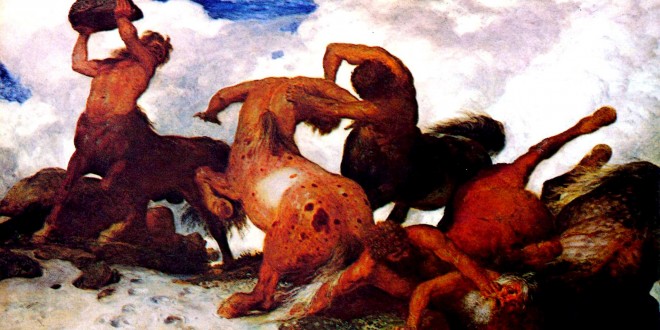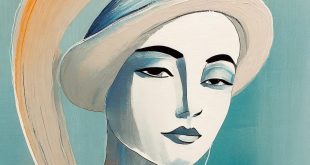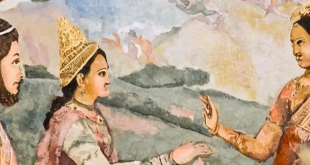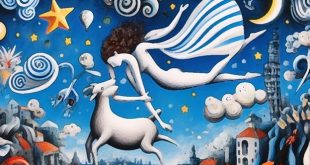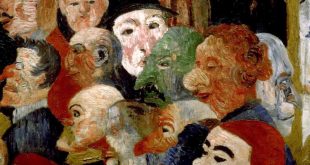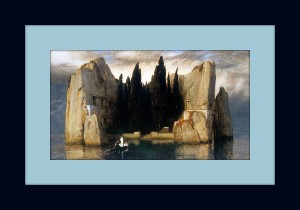 ARNOLD BOCKLIN 1/3 – When in 1945 the Red Army entered Berlin, one of the five versions of a painting by Böcklin it was still hanging on the wall of the study of Hitler. That painting – born in a period spanning the last vestiges of Neoclassicism and signs devoid of Art Nouveau – has remained in Moscow for many years, until the Germans they bought again. Today, at the Museum of Modern Art in Berlin, you can also admire “The Isle of the Dead.”
ARNOLD BOCKLIN 1/3 – When in 1945 the Red Army entered Berlin, one of the five versions of a painting by Böcklin it was still hanging on the wall of the study of Hitler. That painting – born in a period spanning the last vestiges of Neoclassicism and signs devoid of Art Nouveau – has remained in Moscow for many years, until the Germans they bought again. Today, at the Museum of Modern Art in Berlin, you can also admire “The Isle of the Dead.”  ARNOLD BOCKLIN 2/3 – Arnold Böcklin, painter and draftsman, sculptor and Swiss graphic artist, was born in Basel in 1827 and moved to Germany to study at the Academy of Fine Arts in Düsseldorf, becoming one of the leading exponents of the German symbolism. He loves to paint landscapes and travels in Italy, settling in Rome – where he married Angela Pascucci – honing his own pictorial romanticism in key mythological and symbolist. For a few years he is a professor at the School of Art in Weimar, but he returned to Rome, also visiting Naples and Pompei. Of two children enter his life: Beatrice will die prematurely, Carlo will devote to painting. Health reasons forced him to rest, looking for the house of his last landing ground in Italy, at Fiesole.
ARNOLD BOCKLIN 2/3 – Arnold Böcklin, painter and draftsman, sculptor and Swiss graphic artist, was born in Basel in 1827 and moved to Germany to study at the Academy of Fine Arts in Düsseldorf, becoming one of the leading exponents of the German symbolism. He loves to paint landscapes and travels in Italy, settling in Rome – where he married Angela Pascucci – honing his own pictorial romanticism in key mythological and symbolist. For a few years he is a professor at the School of Art in Weimar, but he returned to Rome, also visiting Naples and Pompei. Of two children enter his life: Beatrice will die prematurely, Carlo will devote to painting. Health reasons forced him to rest, looking for the house of his last landing ground in Italy, at Fiesole. 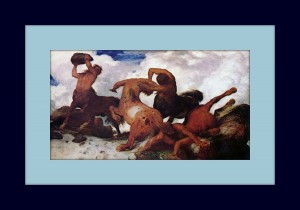 ARNOLD BOCKLIN 3/3 – Among his best known “La Peste works”, “The Najadi the game”, “The villa on the sea” and “The Island of the Dead” (with an oarsman, with a figure dressed in white, in a small boat through deep water, direct to the rocky island. Look at the boat, there is an object, perhaps a coffin). This painting was commissioned by a countess who wanted a pictorial representation of life after death. Since 1901, Arnold Böcklin is waiting for you in Florence, in the cemetery of the Evangelical Allori. You can see more on Meeting Benches, looking for: ARNOLD BOCKLIN (1827/1901), SWISS PAINTER – Shades of symbolism, between Neoclassicism and Art Nouveau
ARNOLD BOCKLIN 3/3 – Among his best known “La Peste works”, “The Najadi the game”, “The villa on the sea” and “The Island of the Dead” (with an oarsman, with a figure dressed in white, in a small boat through deep water, direct to the rocky island. Look at the boat, there is an object, perhaps a coffin). This painting was commissioned by a countess who wanted a pictorial representation of life after death. Since 1901, Arnold Böcklin is waiting for you in Florence, in the cemetery of the Evangelical Allori. You can see more on Meeting Benches, looking for: ARNOLD BOCKLIN (1827/1901), SWISS PAINTER – Shades of symbolism, between Neoclassicism and Art Nouveau
 Meeting Benches World art in all forms
Meeting Benches World art in all forms
